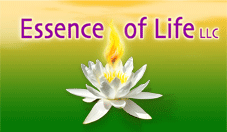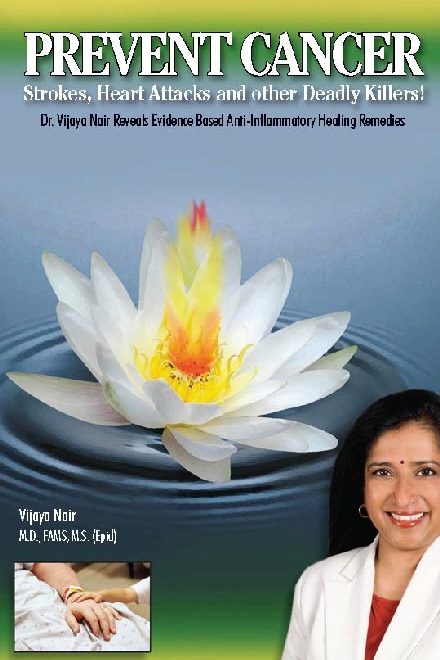Read the PDF from Science Direct - “Natural Products as a Gold Mine for Arthritis Treatment.”
 |
BiochemPharmacol. 2008 Feb 15;75(4):787-809. Epub 2007 Aug 19.
![]() Links
Links
Curcumin as "Curecumin": from kitchen to clinic.
Goel A, Kunnumakkara AB, Aggarwal BB.
Gastrointestinal Cancer Research Laboratory, Department of Internal Medicine, Charles A. Sammons Cancer Center and Baylor Research Institute, Baylor University Medical Center, Dallas, TX, United States.
Although turmeric (Curcuma longa; an Indian spice) has been described in Ayurveda, as a treatment for inflammatory diseases and is referred by different names in different cultures, the active principle called curcumin or diferuloylmethane, a yellow pigment present in turmeric (curry powder) has been shown to exhibit numerous activities. Extensive research over the last half century has revealed several important functions of curcumin. It binds to a variety of proteins and inhibits the activity of various kinases. By modulating the activation of various transcription factors, curcumin regulates the expression of inflammatory enzymes, cytokines, adhesion molecules, and cell survival proteins. Curcumin also downregulatescyclin D1, cyclin E and MDM2; and upregulates p21, p27, and p53. Various preclinical cell culture and animal studies suggest that curcumin has potential as an antiproliferative, anti-invasive, and antiangiogenic agent; as a mediator of chemoresistance and radioresistance; as a chemopreventive agent; and as a therapeutic agent in wound healing, diabetes, Alzheimer disease, Parkinson disease, cardiovascular disease, pulmonary disease, and arthritis. Pilot phase I clinical trials have shown curcumin to be safe even when consumed at a daily dose of 12g for 3 months. Other clinical trials suggest a potential therapeutic role for curcumin in diseases such as familial adenomatouspolyposis, inflammatory bowel disease, ulcerative colitis, colon cancer, pancreatic cancer, hypercholesteremia, atherosclerosis, pancreatitis, psoriasis, chronic anterior uveitis and arthritis. Thus, curcumin, a spice once relegated to the kitchen shelf, has moved into the clinic and may prove to be "Curecumin".
Inflamm Res. 2006 Apr;55(4):168-75.
![]() Links
Links
The antioxidants curcumin and quercetin inhibit inflammatory processes associated with arthritis.
Jackson JK, Higo T, Hunter WL, Burt HM.
Faculty of Pharmaceutical Sciences, University ofBritish Columbia, 2146 East Mall, VancouverBC,CanadaV6T 1Z3.
OBJECTIVE: Curcumin and quercetin are antioxidant molecules with anti-proliferative, anti-inflammatory and immunosuppressive activities. The objective of this study was to investigate the inhibitory activity of these agents using four assays of inflammatory aspects of arthritis. METHODS: Crystal-induced neutrophil activation was measured byluminol-dependent chemiluminescence.Synoviocyte proliferation was measured by an MTS assay using HIG-82 rabbit synoviocytes in cell culture. Chondrocyte (cultured primary cells) expression of the matrix metalloproteinasescollagenase and stromelysin was measured by Northern Blot analysis. Angiogenesis was measured using the chorioallantoic membrane of the chick embryo. RESULTS: Both agents inhibited neutrophil activation, synoviocyte proliferation and angiogenesis. Curcumin strongly inhibited collagenase and stromelysin expression at micromolar concentrations whereas quercetin had no effect in this assay. CONCLUSION: These studies suggest that curcumin and to a lesser extent quercetin may offer therapeutic potential for the treatment of crystal-induced arthritis or rheumatoi
CurrOpinPharmacol. 2007 Jun;7(3):344-51. Epub 2007 May 1.
![]() Links
Links
Natural products as a gold mine for arthritis treatment.
Khanna D, Sethi G, Ahn KS, Pandey MK, Kunnumakkara AB, Sung B, Aggarwal A, Aggarwal BB.
Division of Immunology, Department of Medicine, University of Cincinnati, Cincinnati, OH, USA.
Arthritis, an inflammation of the joints, is usually a chronic disease that results from dysregulation of pro-inflammatory cytokines (e.g. tumour necrosis factor and interleukin-1beta) and pro-inflammatory enzymes that mediate the production of prostaglandins (e.g. cyclooxygenase-2) and leukotrienes (e.g. lipooxygenase), together with the expression of adhesion molecules and matrix metalloproteinases, andhyperproliferation of synovial fibroblasts. All of these factors are regulated by the activation of the transcription factor nuclear factor-kappaB. Thus, agents that suppress the expression of tumour necrosis factor-alpha, interleukin-1beta, cyclooxygenase-2, lipooxygenase, matrix metalloproteinases or adhesion molecules, or suppress the activation of NF-kappaB, all have potential for the treatment of arthritis. Numerous agents derived from plants can suppress these cell signaling intermediates, including curcumin (from turmeric), resveratrol (red grapes, cranberries and peanuts), tea polyphenols, genistein (soy), quercetin (onions), silymarin (artichoke), guggulsterone (guggul),boswellic acid (salaiguggul) and withanolides (ashwagandha). Indeed, several preclinical and clinical studies suggest that these agents have potential for arthritis treatment. Although gold compounds are no longer employed for the treatment of arthritis, the large number of inexpensive natural products that can modulate inflammatory responses, but lack side effects, constitute 'goldmines' for th


Copyright 2008 © Essence of Life, LLC.
487 East Main St., Suite 297 Mount Kisco, NY 10549-3420 Telephone 800 517 7606


